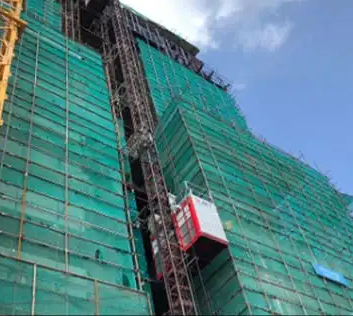Construction hoists, also known as construction elevators or builders hoists, are widely used in the construction industry to transport workers, materials, and equipment to different levels of a construction site. As the construction industry continues to grow, the demand for construction hoists is expected to increase. In this article, we will discuss the future market demand and technological trends of construction hoists.
Market Demand:
The construction industry is one of the fastest-growing industries in the world. According to a report by MarketsandMarkets, the global construction hoist market size is expected to reach USD 2.8 billion by 2025, growing at a CAGR of 7.0% during the forecast period. The increasing demand for high-rise buildings, the need for efficient material handling, and the growing emphasis on worker safety are some of the key factors driving the growth of the construction hoist market.
In addition, the rise of modular construction, which involves building prefabricated modules off-site and assembling them on-site, is also expected to drive the demand for construction hoists. Modular construction allows for faster construction times, lower costs, and improved quality control. However, transporting the prefabricated modules to the construction site requires efficient material handling equipment, such as construction hoists.

Technological Trends:
The construction hoist industry is also witnessing several technological trends that are expected to shape the future of the market. Here are some of the key technological trends:
- Integration with IoT and AI: The integration of construction hoists with the Internet of Things (IoT) and Artificial Intelligence (AI) is expected to improve their efficiency and safety. IoT-enabled construction hoists can be monitored remotely, enabling real-time tracking of their usage, maintenance needs, and performance.construction hoist lift. AI-powered hoists can analyze the data collected by IoT sensors to predict maintenance needs and optimize performance.
- Increased automation: The increasing automation of construction hoists is expected to reduce the need for human intervention, improve efficiency, and enhance safety. Automated hoists can be programmed to operate without human intervention, reducing the risk of accidents caused by human error.
- Improved safety features: Safety is a major concern in the construction industry, and construction hoists are no exception. The integration of advanced safety features such as anti-fall systems, overload protection, and emergency stop buttons is expected to improve the safety of construction hoists.
- Green technology: The use of green technology such as electric-powered hoists and solar-powered hoists is expected to increase in the future. Electric-powered hoists are environmentally friendly and can reduce operating costs, while solar-powered hoists can operate without the need for external power sources.
Conclusion:
In conclusion, the construction hoist market is expected to grow in the coming years due to the increasing demand for high-rise buildings, modular construction, and worker safety. The integration of IoT and AI, increased automation, improved safety features, and the use of green technology are some of the key technological trends that are expected to shape the future of the construction hoist market. As the construction industry continues to evolve, so too will the technology used in construction hoists, enabling safer, more efficient, and more sustainable construction practices.